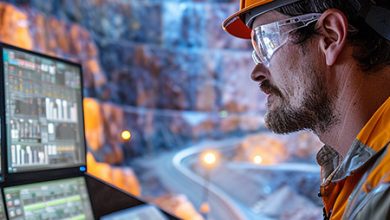[Disclaimer: The views expressed in this article are those of the author and do not necessarily reflect the views of any affiliated publications or organisations.]
Every few weeks, almost like clockwork, a new headline touts the latest humanoid robot triumph, one that’s meant to wow us with how close we’re getting to recreating ourselves in metal. Whether it’s a robot running a half-marathon in China or dribbling a football, the message is always the same: Look how far we’ve come.
In my view, it isn’t progress. It’s performance art for the elite.
We’ve long been fascinated by the idea of building human-like machines—just look to the mechanical society in Samuel Butler’s Erewhon (1872), or the android Maria in Fritz Lang’s Metropolis. But fascination does not equal justification. The myth of the humanoid robot, like the myth of the flying car (another overhyped darling of so-called futurists), lives more comfortably in science fiction than it ever should in our infrastructure.
And yet, here we are, burning resources, time, and money that could have been spent benefiting humanity, instead chasing the dream of robots that look like us, walk like us, and, most tellingly, work for us. It is the height of hubris to think it wise to create beings that mimic us, only to make them work for us, and ultimately displace some of us.
The reality is, most of these “breakthroughs” amount to little more than a machine picking up a box slightly better than it did last year.
But the real danger isn’t their capability, it’s the celebration of their potential. A culture that cheers on machines designed to displace workers isn’t future-facing, it’s a race to the bottom that ignores the not-too-distant past and the human cost that comes next.
The ultimate form of outsourcing
AI is routinely improving at a frankly staggering pace. Just look at ChatGPT, it’s a completely different beast from the platform you first used back in 2022. How about video generation? Google’s new Veo 3 model is leaps ahead in quality compared to the original iteration.
The same trajectory will apply to humanoid robots. The underlying foundation models will inevitably improve. As will the actuators, sensors, and edge processing devices that provide the movement necessary for human-like actions.
And that’s exactly the problem.
I’m not against innovation. If a robot can get me my parcel a bit quicker, then great. But what I am against is the fact that this line of development is all but guaranteed to lead to job losses.
Humanoid robots represent the final frontier in outsourcing, except it’s not to another country, but to a machine. Sure, the practice has its perks, cheaper products, meaning more capital for folks to spend. But it means job cuts.
The argument I’ve seen over the years from several businesses for implementing some form of AI is along the lines of the tech enabling staff to ‘focus on high-level tasks’ or ‘be more creative.’ And sure, automating the odd process here or there can help, allowing me to get on with my day.
But with humanoid robots, it’s hard to be “more creative” when the robot’s taken over your entire role. How can I ‘think outside the box’ while standing in the unemployment line?
As a Brit, I’ve watched firms pack up and leave the UK after decades of operations. Honda quitting Swindon after 36 years, Barclays shifting to Dublin, Dyson to Singapore. If it saves a business a buck, they’ll do it. And right now, big brands are watching how AI develops, and the same is likely to be true for humanoid robots.
Already, BMW is among those racing ahead here, enlisting the OpenAI-backed firm Figure AI to try out its humanoid robots in car manufacturing plants.
But it’s to the East where development is really taking off. Frankly, it’s hardly surprising that China, the world’s manufacturing plant, is trying to force its way to the top when it comes to humanoid robots, especially as the country’s middle class begins to burgeon.
People in China don’t want to work in factories anymore, especially in considerably more drastic environments compared to Western plants, evident from the fact that China Labour Bulletin figures suggest there were 719 strike actions in just the first half of 2024, compared to just 66 in 2021.
China is greedily eying humanoid development; in the same way, it’s vying for dominance in electric vehicles and solar energy. Not for the good of the planet or its people, but to build and sell more stuff and make more money.
Already, ranging from the well-known, like Honor, to the obscure, like Omoda and Jaecoo are spending billions to build out humanoid robots.
But beyond manufacturing and logistics, who are these robots actually for?
Several firms have come out and said, ‘We want to build humanoid robots as assistants for home and healthcare settings.’ But honestly, who has a spare $30k lying around to buy a creepy-looking robot to dust your home? Or keep your grandmother company?
This isn’t about building something useful, but to make something that’ll eventually be cheap enough to justify mass replacement of workers. The moment humanoid robots reach cost parity with human labour, companies with deep enough pockets will drop people without hesitation.
You think that’s cynical? Just look at what’s already happening with AI applications like ChatGPT. We’re increasingly seeing reports that staff in the media and creative industries are being dropped in favour of chatbots to pen scripts or draw up designs.
Why hire a human when an algorithm works 24/7, never calls in sick, and doesn’t complain about the taste of the disgusting office coffee?
But here’s the thing: when the machine fails, you’ll wish you still had the humans around.
Case in point: Klarna, the Swedish fintech giant. In 2023, CEO Sebastian Siemiatkowski proudly proclaimed that AI could do the work of 700 employees. Fast-forward a little over two years, and the fintech seems to have changed its tune:
“From a brand perspective, a company perspective, I just think it’s so critical that you are clear to your customer that there will be always a human if you want,” Siemiatkowski told Bloomberg recently. How the turntables turn.
Klarna wasn’t alone either. Language app Duolingo also tried to go ‘AI-first’, only for users to leave in droves.
While an advanced humanoid robot might eventually be able to perform tasks to a better degree than a human, there’ll come a time when something goes wrong, something quite easily preventable, which will leave companies scrambling for staff.
Imagine, if you will, a software update gone awry – similar to the infamous CrowdStrike fail of 2024, that takes out your entire fleet of bots. Who is going to process all your packing orders now?
People still want people
For all the money being thrown at humanoid robots, there’s one truth that keeps surfacing: people still want people. Customers don’t want to explain their billing issue to a blinking plastic face. Patients don’t want care from a machine that can’t understand pain. And workers don’t want to be replaced by something that doesn’t understand what it’s like to work.
The humanoid robot might be a technical marvel someday, but it’s also a social miscalculation.
In the rush to automate everything, we risk forgetting why human presence, labour, and empathy matter. There’s a difference between innovation that assists people and innovation that replaces them.
Ultimately, I disagree with Nvidia’s Jensen Huang that physical AI will be the next big thing. Prove me wrong in five to ten years of course, but in my view, quantum computing, while confusing to the masses, offers far more practical benefits to society than a plastic-covered robot.
This isn’t about stopping progress. It’s about asking: Who is that progress really for?




